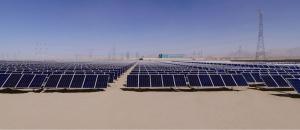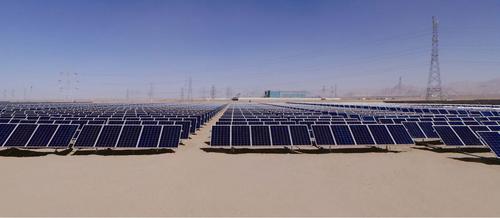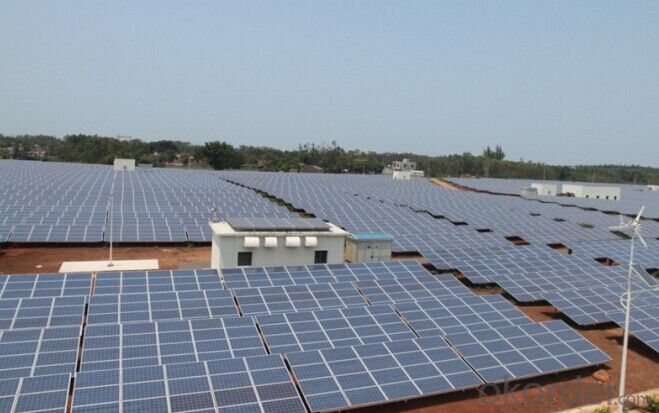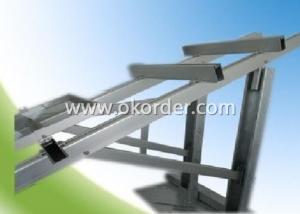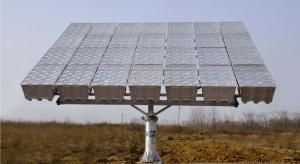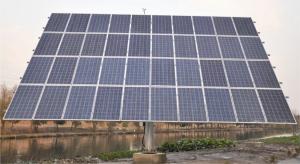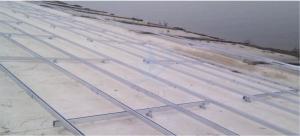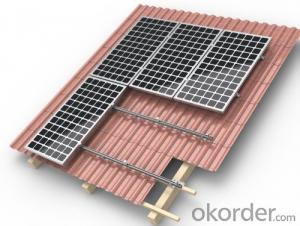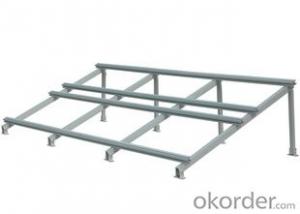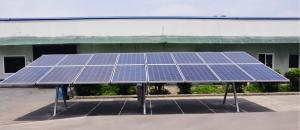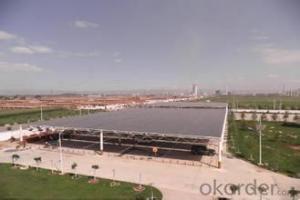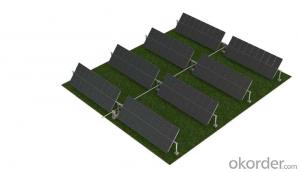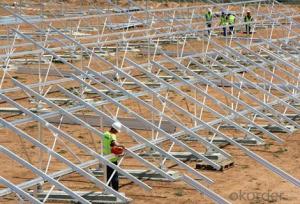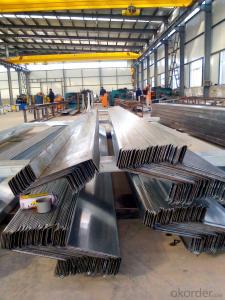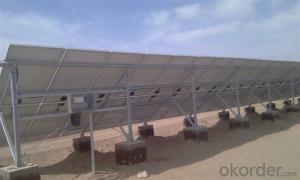Carport Solar Mounting System with Large Scale Ground Joint Horizontal Axis Tracking
- Loading Port:
- Shanghai
- Payment Terms:
- TT OR LC
- Min Order Qty:
- 500000 watt
- Supply Capability:
- 5000000 watt/month
OKorder Service Pledge
OKorder Financial Service
You Might Also Like
Large scale ground joint horizontal axis tracking system
Tracking system used in solar plant
Performance Feature:
single set horizontal axis tracking system is that:
1. the advantage conpared with the fixed mounting system.cover the same area as the fixed mounting system.
2. power generating can be increased by 10-30%.the foundation scale is the same as the fixed mounting system.
3. the comprehensive costs are much lower than the fixed mounting system.
4. suitable fooe the min-low latitude areas and comples terrain.
5. the large gronud area ,color steel tile roof and etc.
6. thefirst input only need 2 years to recover costs,and the investors will receive10-30% annual generating incomes more than 20 years.
•installed capacity | • 1KW—10KW |
•control method | •Light control •time control •light/time control |
•tracking accurancy | • ≤1° |
•Azimuth angle | • ±45° |
•Working wind | • 50—70km/h |
•Max wind resistance | • 125—200km/h |
•Driven power | • DC24V/≤30W |
•Structural material | • Q 2 3 5 •hot-dip galvanized steel |
•level of protection | • IP65 |
•Quality guarantee | • 25Y/2Y |
•Operating ambient temperature | • -35℃—65℃ |
•Area of net rack | • 10㎡—80㎡ |
•Unit weight | • 200kg——2000kg |
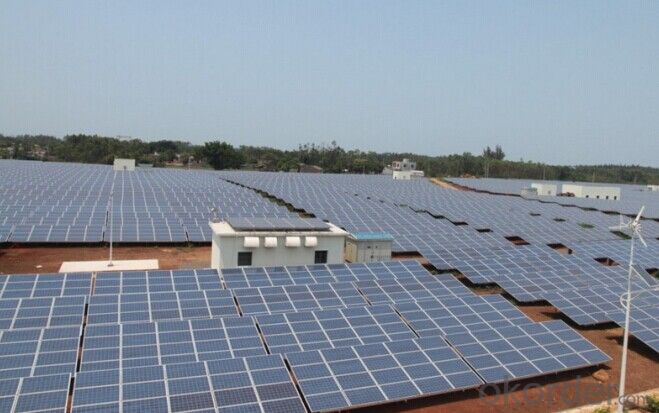

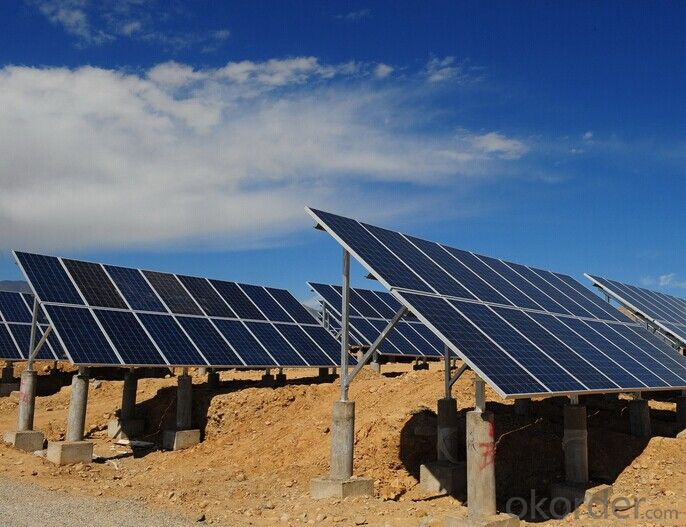
- Q: Can solar mounting systems be installed on asphalt or concrete surfaces?
- Yes, solar mounting systems can be installed on both asphalt and concrete surfaces. However, the installation process may vary depending on the type of surface and the specific mounting system being used. It is important to ensure that the surface is structurally sound and capable of supporting the weight of the solar panels and mounting system. Proper installation techniques and materials should be used to securely attach the mounting system to the surface, minimizing any potential damage or deterioration.
- Q: Can a solar mounting system be used in areas with limited access to electric vehicle charging infrastructure?
- Yes, a solar mounting system can be used in areas with limited access to electric vehicle charging infrastructure. Solar mounting systems harness solar energy to generate electricity, which can be used to charge electric vehicles. This provides an alternative charging solution for areas without traditional charging infrastructure, utilizing renewable energy sources and promoting sustainable transportation.
- Q: Can a solar mounting system be used in remote areas?
- Yes, a solar mounting system can be used in remote areas. Solar mounting systems are designed to be versatile and can be installed in various locations, including remote areas with limited access to electricity grids. This allows for the harnessing of solar energy in off-grid locations, providing power and energy independence to remote communities and facilities.
- Q: Can a solar mounting system be installed on a mountain or ski resort?
- Yes, a solar mounting system can be installed on a mountain or ski resort. In fact, mountainous areas and ski resorts can be ideal locations for solar installations due to their high elevation and ample sunlight exposure. Mounting the solar panels on elevated terrain can maximize their efficiency and energy production. Additionally, ski resorts often have large open spaces or unused land that can be utilized for solar panel installation, making it a feasible and sustainable option for generating clean energy in such locations.
- Q: Can a solar mounting system be used with different types of roofing materials?
- Yes, a solar mounting system can be used with different types of roofing materials. The system can be designed and installed to accommodate various roofing materials such as asphalt shingles, metal roofs, tile roofs, or flat roofs. The mounting system can be customized to ensure compatibility and secure attachment to the specific type of roofing material used.
- Q: Can solar mounting systems be installed on buildings with limited foundation options?
- Yes, solar mounting systems can be installed on buildings with limited foundation options. There are various types of solar mounting systems available, such as ballasted, roof-mounted, and pole-mounted systems, which can be adapted to different foundation options. For buildings with limited foundation options, alternative methods like ballast blocks or specialized roof attachments can be used to secure the solar panels. It is crucial to consult with professionals in the field to determine the most suitable solar mounting system for a specific building's foundation limitations.
- Q: Can a solar mounting system be installed on a rooftop with a composite roof?
- Yes, a solar mounting system can be installed on a rooftop with a composite roof. Composite roofs are often suitable for solar panel installations as they provide a sturdy and stable surface for mounting the system. However, it is important to consult with a professional installer to ensure that the specific composite roof material and structure can accommodate the weight and installation requirements of the solar mounting system.
- Q: Can a solar mounting system be used with a battery storage system?
- Yes, a solar mounting system can be used with a battery storage system. The solar mounting system is responsible for securing and positioning the solar panels, while the battery storage system stores excess energy generated by the panels for later use. By combining both systems, solar energy can be captured and stored efficiently, providing a continuous and reliable power supply.
- Q: Can a solar mounting system be used with solar facades?
- Yes, a solar mounting system can be used with solar facades. The mounting system provides the necessary support and structure to securely install solar panels on building facades, allowing for efficient energy generation from both rooftop and vertical surfaces.
- Q: Can a solar mounting system be used in areas with solar incentives for manufacturing facilities?
- Yes, a solar mounting system can be used in areas with solar incentives for manufacturing facilities. These mounting systems are designed to securely install solar panels and can be utilized in any location that has incentives for solar energy production, including manufacturing facilities.
Send your message to us
Carport Solar Mounting System with Large Scale Ground Joint Horizontal Axis Tracking
- Loading Port:
- Shanghai
- Payment Terms:
- TT OR LC
- Min Order Qty:
- 500000 watt
- Supply Capability:
- 5000000 watt/month
OKorder Service Pledge
OKorder Financial Service
Similar products
Hot products
Hot Searches
Related keywords
